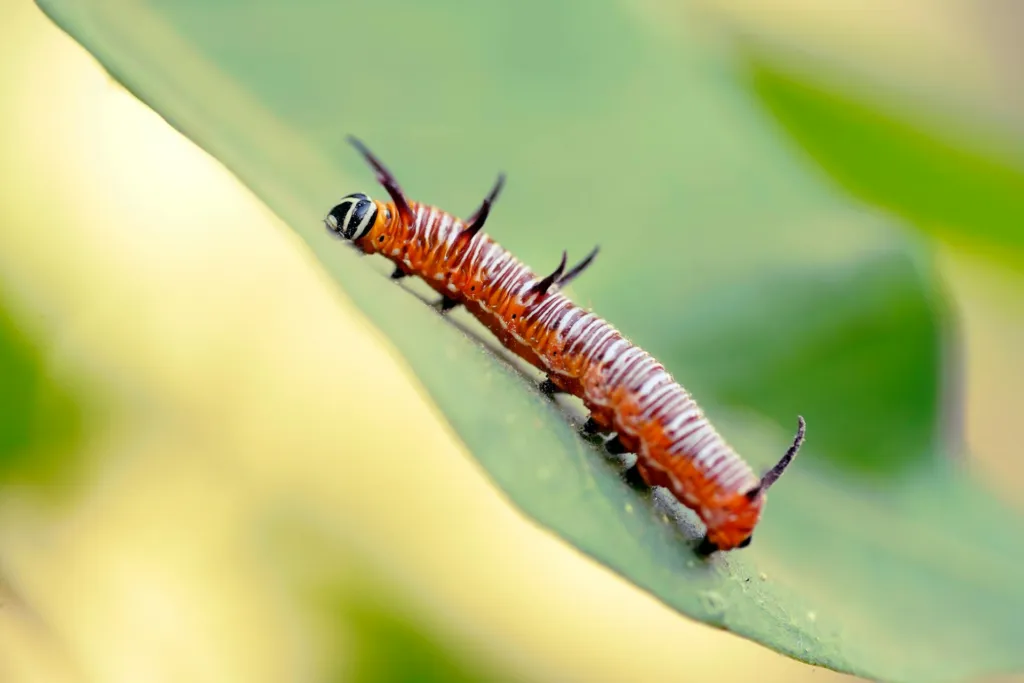
Armyworm On the March: Protect Your Dallas Lawn
Your Essential Battle Plan for Detection & Defense
Dallas homeowners beware! An armyworm epidemic is sweeping through North Texas lawns. These hungry invaders can transform green turf into a barren wasteland in just 48 hours. With proper knowledge and timely action, you can stop these destructive caterpillars in their tracks.
At Real Green, we’ve been defending Texas lawns against armyworm assaults for years. This comprehensive guide will arm you with everything you need to know: early warning signs, prevention strategies, and more.
Meet the Worst Nightmare on Your Lawn
The ideal lawn-destroying creatures found in nature are fall armyworms. These caterpillars attack in battalion-like formations, tearing grass blades down to the soil in their unrelenting feeding frenzy, in contrast to typical garden pests that nibble covertly.
Armyworms Are Especially Harmful to Dallas Lawns
Armyworms love healthy yards, so lush grass is their favorite thing. Check out more reasons why homeowners dislike these bugs.
- Fast feeders. 80% of a lawn’s foliage can be consumed in a single night.
- Quick cycles of reproduction. Every four weeks, new generations appear like clockwork.
- Gourmet tastes. They pay particular attention to well-kept, fertilized turfgrass.
- Sneaky style. They conceal themselves during the day beneath soil and thatch and come out at night.

Methods for Armyworm ID
Early detection is the first step to victory. Learn to spot these warning signs:
Physical Attributes
- Pale green to almost black camouflage with recognizable racing stripes
- Growth in size from almost undetectable hatchlings to caterpillars the size of thumbs
- The distinctive inverted “Y” on their heads is the military insignia
- Twilight and the hours after rain are when activity is at its highest
Evaluation of Damage
Armyworms eat the grass blades all the way down to its stem. Here are some characteristics that may prove armyworms are at fault for your lawn’s poor state.
- Unusual brown patches that appear at a startling rate
- As though using tiny lawnmowers, the grass was torn down to the stems.
- Places where the turf looks consistently “buzzed” instead of patchy
- An increase in bird traffic (nature’s first responders to outbreaks of armyworms)
- Damaged grass blades with visible silken threads
Without treatment, an armyworm infestion can really harm new grass and turn pre-existing yards lawns into ugly messes.
Armyworm Removal Strategies That Work
Manual Removal
If you identify the issue early on, handpicking may offer some short-term respite. Gather any caterpillars that are visible at sunrise or sunset and discard them in soapy water. However, because it’s easy to overlook eggs and newly hatched larvae, this approach rarely fully resolves the issue.
Chemical Treatments
For dependable, long-lasting defense, our focused applications:
- Get rid of all live caterpillars.
- Build defenses against invasions in the future.
- Make use of family-friendly formulas.
- Offer lingering protection against future generations.
Prevention Should Be Your First Line of Defense
Attempt to stop armyworms before they start doing damage with the following measures.
- Schedule strategic defenses – Late summer treatments are critical
- Maintain optimal turf height – Never scalp your grass below recommended levels
- Practice smart nutrition – Avoid over-fertilization that attracts invaders
- Recruit natural allies – Encourage birds, parasitic wasps, and beneficial nematodes
- Conduct regular surveillance – Weekly inspections during threat season (August-November)

Answers to the Armyworm FAQs
Why are we seeing unprecedented armyworm numbers?
Climate patterns have created ideal breeding conditions, while wind currents transport moths across state lines.
When is peak armyworm season in Dallas?
Populations typically peak from late July through October, with multiple waves.
Can my lawn recover from heavy damage?
Absolutely! With proper irrigation, gentle nutrition, and strategic overseeding, most lawns make a full recovery.
Are treatment zones still suitable for pets and kids?
Our treatments are family-friendly once dry, though we recommend a 24-48 hour waiting period.
Why does the threat level vary annually?
Winter survival rates and spring migration patterns dramatically affect population sizes.
Don’t Allow Armyworms to Win
When battling these turf terrorists, time is of the essence. Contact the armyworm experts at GroGreen as soon as damage is noticed. We proudly serve the greater DFW area, ensuring high-quality lawn care and pest control services for these communities:
- Allen, TX
- Carrollton, TX
- Coppell, TX
- Fairview Farmers Branch, TX
- Flower Mound, TX
- Frisco, TX
- Lucas, TX
- McKinney, TX
- Murphy, TX
- Parker, TX
- Plano, TX
- Prosper, TX
- Richardson, TX
- Sachse, TX
- St. Paul, TX
- The Colony, TX
- Wylie, TX
